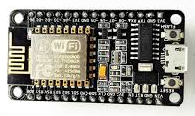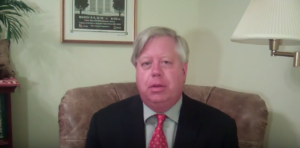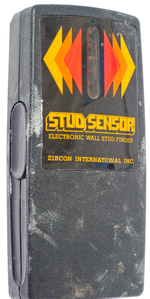 As of a couple of years ago the big thing in microcontrollers was the Arduino. The Arduino was (and still is) a delightful board for hobby projects. But now there’s a new microcontroller board for hobby projects, namely the fetchingly named ESP8266 ESP-12E NodeMCU board, pictured at right. There are many nice things about this board. Continue reading “The Next Big Thing in microcontrollers”
As of a couple of years ago the big thing in microcontrollers was the Arduino. The Arduino was (and still is) a delightful board for hobby projects. But now there’s a new microcontroller board for hobby projects, namely the fetchingly named ESP8266 ESP-12E NodeMCU board, pictured at right. There are many nice things about this board. Continue reading “The Next Big Thing in microcontrollers”
Searching Authority fee changes effective January 1, 2017
The fees payable in US dollars for the services of various International Searching Authorities will change on January 1, 2017. The following table lists the ISAs that are available to applicants filing in RO/US, ranked in descending order of cost for the first invention.
| before January 1, 2017 US$ | effective January 1, 2017 US$ | second through nth inventions | approximate US$ | |
| ISA/EP | 2097 | 2103 | € 1875 | 1985 |
| ISA/US (large entity) | 2080 | 2080 | US$ 2080 | 2080 |
| ISA/AU | 1674 | 1688 | AU$ 2200 | 1637 |
| ISA/SG | 1578 | 1641 | SG$ 2240 | 1567 |
| ISA/JP | 1530 | 1536 | ¥ 126000 | 1115 |
| ISA/KR | 1120 | 1177 | ₩ 225000 | 191 |
| ISA/US (small entity) | 1040 | 1040 | US$ 1040 | 1040 |
| ISA/IL | 912 | 938 | ₪ 3529 | 911 |
| ISA/US (micro entity) | 520 | 520 | US$ 520 | 520 |
| ISA/RU | 420 | 449 | руб 28000 | 433 |
Continue reading “Searching Authority fee changes effective January 1, 2017”
ISA/US work product gets you on the Highway in the USPTO?

This email came in today from someone (let’s call him “PY”) asking about PCT-PPH:
PY’s question is actually a very smart question. First I will explain why this is a very smart question, and then I will offer a practical answer to the question.
Continue reading “ISA/US work product gets you on the Highway in the USPTO?”
Delay of 36 days at USPTO’s Assignment Branch
Readers will recall my previous post about big delays in the Assignment Branch at the USPTO. As I reported in that post, we had e-filed an Assignment for recordation on October 10, 2016 and even after some weeks the Assignment Branch had not gotten around to giving us the all-important reel and frame number. We had placed a followup call on October 27 reaching a nice fellow who told us that there was a backlog. We placed another followup call on November 7 reaching a nice woman who said yes there was still a backlog. On that day I posted the above-mentioned blog article and one reader posted a comment that she was able to top me. She had e-filed an Assignment on October 6 that had not been recorded as of November 7. Another reader posted a comment that he was able to top both of us, with an Assignment that he had e-filed on September 15 and that the Assignment Branch had not recorded as of November 7.
Anyway now there is news. Today, November 15, USPTO has mailed a Notice of Recordation for this Assignment that we e-filed on October 10. It took the Assignment Branch 36 days to get around to recording this Assignment.
WIPO’s PCT distance learning course
 WIPO offers a distance learning course called Introduction to the Patent Cooperation Treaty. The course is free of charge. My suggestion is that any person who is involved in providing services to clients relating to the PCT ought to take this course, pass the quizzes, and obtain the certificate of completion. My suggestion extends to patent practitioners, paralegals, and administrative assistants. I took the course just today and here is my certificate of completion.
WIPO offers a distance learning course called Introduction to the Patent Cooperation Treaty. The course is free of charge. My suggestion is that any person who is involved in providing services to clients relating to the PCT ought to take this course, pass the quizzes, and obtain the certificate of completion. My suggestion extends to patent practitioners, paralegals, and administrative assistants. I took the course just today and here is my certificate of completion.
To learn more or to register for the course, click here. You can see more information about the course below. Continue reading “WIPO’s PCT distance learning course”
Trademark files from the days before computers
Today we received an interesting letter from the post-registration branch at the USPTO. The letter says that the Section 15 papers that we filed a couple of months ago (to make a registration “incontestable“) are being bounced. The Section 15 fee that we paid will be refunded, the letter explains. The letter explains that the Section 15 papers that we filed “remain in the record”. The Section 15 papers “will not be returned to you and will not be processed or reviewed.” Can you guess why this happened?
Continue reading “Trademark files from the days before computers”
Picking a smart speaker

 It’s getting to the point where a person might choose to get a smart speaker. Which reminds us that we are in a fast-changing world. Used to be there was no such thing as a smart speaker. Which by the way makes me feel ancient. Just in case anyone does not know what a smart speaker is, I will now explain.
It’s getting to the point where a person might choose to get a smart speaker. Which reminds us that we are in a fast-changing world. Used to be there was no such thing as a smart speaker. Which by the way makes me feel ancient. Just in case anyone does not know what a smart speaker is, I will now explain.
Speaking on PCT today in Boulder
 I’ll be speaking today with a 2016 PCT update. This is for the Boulder County Bar Association. It is at noon, at the offices of Lathrop & Gage, 4845 Pearl East Circle, Boulder, CO 80301. (map)
I’ll be speaking today with a 2016 PCT update. This is for the Boulder County Bar Association. It is at noon, at the offices of Lathrop & Gage, 4845 Pearl East Circle, Boulder, CO 80301. (map)
Topics include Best Practices for carrying out e-filing, filing Demands, making changes in bibliographic data, and picking a Searching Authority.
You can register here.
Using patents to learn how stuff works – Stud Sensor
 One of the nice things about the patent system is that we can use the patent system to learn how stuff works. One of my favorite examples of this is the Zircon Stud Sensor. This product hit the market in about 1978, and I bought one of the first ones. Continue reading “Using patents to learn how stuff works – Stud Sensor”
One of the nice things about the patent system is that we can use the patent system to learn how stuff works. One of my favorite examples of this is the Zircon Stud Sensor. This product hit the market in about 1978, and I bought one of the first ones. Continue reading “Using patents to learn how stuff works – Stud Sensor”
TTABlog’s got legs!
 Today marks the twelfth anniversary of the TTABlog. Yes, the first-ever posting of the TTABlog was on November 8, 2004. Congratulations and thanks to John L. Welch for all these years of service to the trademark community!
Today marks the twelfth anniversary of the TTABlog. Yes, the first-ever posting of the TTABlog was on November 8, 2004. Congratulations and thanks to John L. Welch for all these years of service to the trademark community!
By comparison the Ant-Like Persistence blog is a mere 2½ years old.
Again, kudos and thanks to John!
